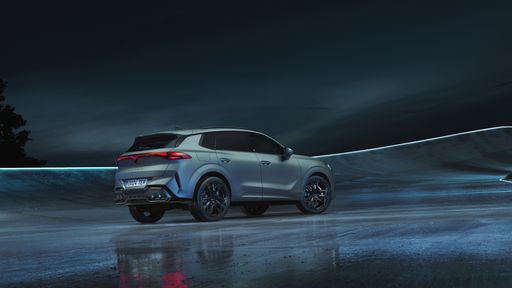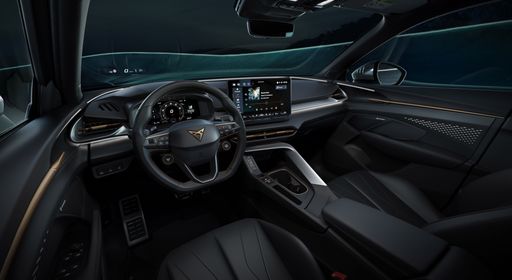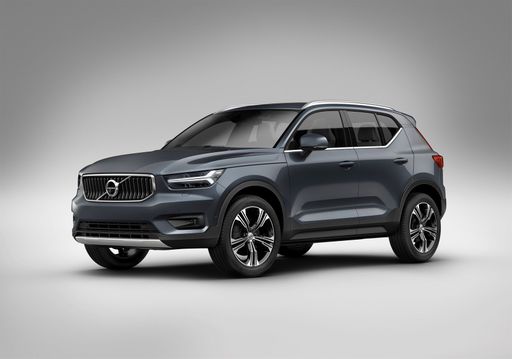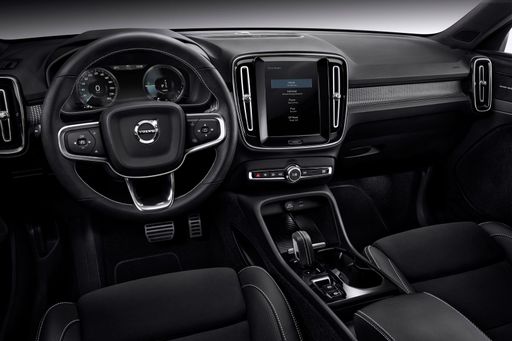CUPRA Terramar vs Volvo XC40 - Differences and prices compared
Costs and Efficiency:
When it comes to price and running costs, the biggest differences usually appear. This is often where you see which car fits your budget better in the long run.
Volvo XC40 has a hardly perceptible advantage in terms of price – it starts at 36800 £, while the CUPRA Terramar costs 36900 £. That’s a price difference of around 112 £.
Fuel consumption also shows a difference: CUPRA Terramar manages with 6.10 L and is therefore slight more efficient than the Volvo XC40 with 6.50 L. The difference is about 0.40 L per 100 km.
Engine and Performance:
Under the bonnet, it becomes clear which model is tuned for sportiness and which one takes the lead when you hit the accelerator.
When it comes to engine power, the CUPRA Terramar has a distinct edge – offering 265 HP compared to 197 HP. That’s roughly 68 HP more horsepower.
In acceleration from 0 to 100 km/h, the CUPRA Terramar is distinct quicker – completing the sprint in 5.90 s, while the Volvo XC40 takes 7.60 s. That’s about 1.70 s faster.
In terms of top speed, the CUPRA Terramar performs noticeable better – reaching 243 km/h, while the Volvo XC40 tops out at 180 km/h. The difference is around 63 km/h.
There’s also a difference in torque: CUPRA Terramar pulls noticeable stronger with 400 Nm compared to 300 Nm. That’s about 100 Nm difference.
Space and Everyday Use:
Cabin size, boot volume and payload all play a role in everyday practicality. Here, comfort and flexibility make the difference.
Seats: offers more seating capacity – vs .
In curb weight, CUPRA Terramar is minimal lighter – 1638 kg compared to 1688 kg. The difference is around 50 kg.
In terms of boot space, the CUPRA Terramar offers to a small extent more room – 540 L compared to 452 L. That’s a difference of about 88 L.
When it comes to payload, CUPRA Terramar minimal takes the win – 542 kg compared to 532 kg. That’s a difference of about 10 kg.
Who comes out on top?
Overall, the CUPRA Terramar shows itself to be leaves the rival little chance and secures the title of DriveDuel Champion.
It convinces with the more balanced overall package and proves to be the more versatile choice for everyday use.
 @ CUPRA / SEAT S.A.
@ CUPRA / SEAT S.A.
CUPRA Terramar
Costs and Consumption
View detailed analysis
Engine and Performance
View detailed analysis
Dimensions and Body
View detailed analysis
CUPRA Terramar
The CUPRA Terramar is a sharply styled, sporty SUV that brings athletic handling and bold design to buyers who want performance with everyday usability. Inside, premium finishes meet driver-focused flair and family-friendly practicality, making it a tempting pick for anyone who wants thrills without turning their daily routine into a chore.
details @ CUPRA / SEAT S.A.
@ CUPRA / SEAT S.A.
 @ CUPRA / SEAT S.A.
@ CUPRA / SEAT S.A.
 @ CUPRA / SEAT S.A.
@ CUPRA / SEAT S.A.
Volvo XC40
The Volvo XC40 wraps Scandinavian minimalism into a compact, city-ready SUV with a premium cabin that feels both practical and grown-up. It will suit buyers who prize safety, clever storage and a composed ride, proving that small dimensions don't mean small personality.
details @ Volvo Cars
@ Volvo Cars
 @ Volvo Cars
@ Volvo Cars
 @ Volvo Cars
@ Volvo Cars
 @ Volvo Cars
@ Volvo Cars
 @ Volvo Cars
@ Volvo Cars
 @ CUPRA / SEAT S.A.
@ CUPRA / SEAT S.A.
|
 @ Volvo Cars
@ Volvo Cars
|
|
|
|
Costs and Consumption |
|
|---|---|
|
Price
36900 - 48500 £
|
Price
36800 - 47200 £
|
|
Consumption L/100km
6.1 - 8.4 L
|
Consumption L/100km
6.50 L
|
|
Consumption kWh/100km
-
|
Consumption kWh/100km
-
|
|
Electric Range
-
|
Electric Range
-
|
|
Battery Capacity
-
|
Battery Capacity
-
|
|
co2
139 - 191 g/km
|
co2
147 - 148 g/km
|
|
Fuel tank capacity
55 - 60 L
|
Fuel tank capacity
54 L
|
Dimensions and Body |
|
|---|---|
|
Body Type
SUV
|
Body Type
SUV
|
|
Seats
5
|
Seats
5
|
|
Doors
5
|
Doors
5
|
|
Curb weight
1638 - 1750 kg
|
Curb weight
1688 kg
|
|
Trunk capacity
540 L
|
Trunk capacity
452 L
|
|
Length
4519 mm
|
Length
4425 mm
|
|
Width
1869 mm
|
Width
1863 mm
|
|
Height
1586 mm
|
Height
1652 mm
|
|
Max trunk capacity
-
|
Max trunk capacity
1328 L
|
|
Payload
540 - 542 kg
|
Payload
532 kg
|
Engine and Performance |
|
|---|---|
|
Engine Type
Petrol MHEV, Petrol
|
Engine Type
Petrol MHEV
|
|
Transmission
Automatic
|
Transmission
Automatic
|
|
Transmission Detail
Dual-Clutch Automatic
|
Transmission Detail
Dual-Clutch Automatic
|
|
Drive Type
Front-Wheel Drive, All-Wheel Drive
|
Drive Type
Front-Wheel Drive
|
|
Power HP
150 - 265 HP
|
Power HP
163 - 197 HP
|
|
Acceleration 0-100km/h
5.9 - 9.3 s
|
Acceleration 0-100km/h
7.6 - 8.6 s
|
|
Max Speed
205 - 243 km/h
|
Max Speed
180 km/h
|
|
Torque
250 - 400 Nm
|
Torque
265 - 300 Nm
|
|
Number of Cylinders
4
|
Number of Cylinders
4
|
|
Power kW
110 - 195 kW
|
Power kW
120 - 145 kW
|
|
Engine capacity
1498 - 1984 cm3
|
Engine capacity
1969 cm3
|
General |
|
|---|---|
|
Model Year
2024
|
Model Year
2024
|
|
CO2 Efficiency Class
E, G, F
|
CO2 Efficiency Class
E
|
|
Brand
CUPRA
|
Brand
Volvo
|
What drivetrain options does the CUPRA Terramar have?
The CUPRA Terramar is available as Front-Wheel Drive or All-Wheel Drive.
The prices and data displayed are estimates based on German list prices and may vary by country. This information is not legally binding.
